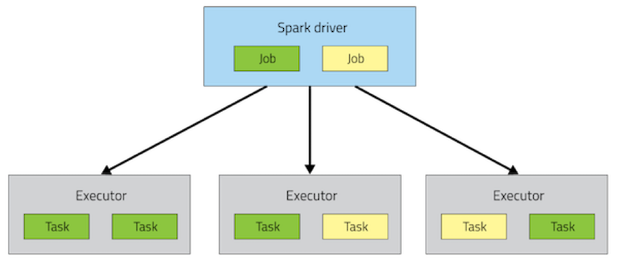Spark Application Overview
Spark Application Model
Apache Spark is widely considered to be the successor to MapReduce for general purpose data processing on Apache Hadoop clusters. Like MapReduce applications, each Spark application is a self-contained computation that runs user-supplied code to compute a result. As with MapReduce jobs, Spark applications can use the resources of multiple hosts. However, Spark has many advantages over MapReduce.
In MapReduce, the highest-level unit of computation is a job. A job loads data, applies a map function, shuffles it, applies a reduce function, and writes data back out to persistent storage. In Spark, the highest-level unit of computation is an application. A Spark application can be used for a single batch job, an interactive session with multiple jobs, or a long-lived server continually satisfying requests. A Spark job can consist of more than just a single map and reduce.
MapReduce starts a process for each task. In contrast, a Spark application can have processes running on its behalf even when it's not running a job. Furthermore, multiple tasks can run within the same executor. Both combine to enable extremely fast task startup time as well as in-memory data storage, resulting in orders of magnitude faster performance over MapReduce.
Spark Execution Model
Spark application execution involves runtime concepts such as driver, executor, task, job, and stage. Understanding these concepts is vital for writing fast and resource efficient Spark programs.
At runtime, a Spark application maps to a single driver process and a set of executor processes distributed across the hosts in a cluster.
The driver process manages the job flow and schedules tasks and is available the entire time the application is running. Typically, this driver process is the same as the client process used to initiate the job, although when run on YARN, the driver can run in the cluster. In interactive mode, the shell itself is the driver process.
The executors are responsible for executing work, in the form of tasks, as well as for storing any data that you cache. Executor lifetime depends on whether dynamic allocation is enabled. An executor has a number of slots for running tasks, and will run many concurrently throughout its lifetime.

Invoking an action inside a Spark application triggers the launch of a job to fulfill it. Spark examines the dataset on which that action depends and formulates an execution plan. The execution plan assembles the dataset transformations into stages. A stage is a collection of tasks that run the same code, each on a different subset of the data.